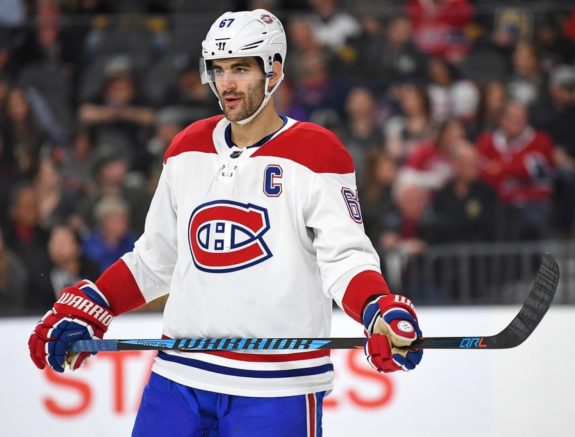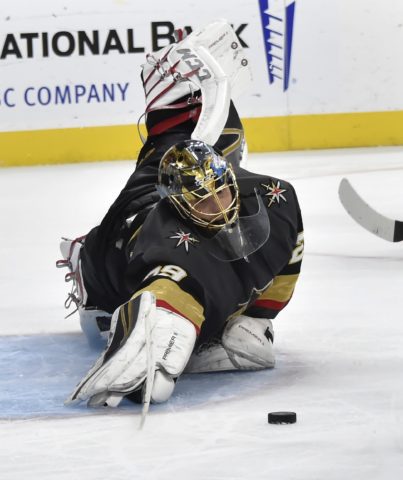Being named the captain of a professional sports team is a big deal. It comes with the responsibility of leading your team through ups and downs and if your organization faces more adversity than others; media and fans put the blame on you first.
This is why the Vegas Golden Knights did not name a captain in their first season. Most of the players drafted in the expansion draft were coming in with one- or two-year contracts and management did not want to hand out the “C” to someone who was not in the team’s future plans.
From the expansion draft, Vegas only has 10 players remaining that they drafted. They selected a lot of other teams cap mistakes and in return acquired extra assets that they were able to build their core around.
They will start their third season this October and the team is still without a captain. However, now the team has its core group signed long term and the roots of the franchise have blossomed in Las Vegas. This is the perfect time to name the first captain in team history, and as the saying goes, “third times a charm”.
Here are the best options to dawn the first “C” in club history.
Deryk Engelland
Recently re-signed to a one-year deal, Engelland has been the leader of this team since day one. He was one of the inaugural alternate captains, played for the Las Vegas Gamblers in the ECHL from 2003-2005 and calls Las Vegas home during the offseason. He plays a physical brand of hockey and many of his teammates appreciate the little things he does.
Before their inaugural home game, Engelland delivered an emotional speech in regards to the horrific events that occurred at the Route 91 Harvest Festival the week before.
With his style of play and leadership on the mic and in the locker room, this makes Engelland a clear cut front runner to wear the “C” first in Golden Knights history.
Reilly Smith
Another player who was one of the inaugural alternates, Smith is an option to be captain because he plays in all situations and is a clutch performer. He can shoot the puck, is an underrated playmaker, and is a cornerstone on their penalty kill. He also has 36 points in his last 33 playoff games, coming to play when it really counts.
He has prior captain experience, as he was the captain in his junior year at Miami University of Ohio before signing his entry-level contract. One of the main reasons why Vegas was so successful in their first season was because of Smith’s leadership. No one would argue if he was named captain.
Max Pacioretty
Pacioretty makes the list because he wore an “A” last season and was the captain of the Montreal Canadiens for three seasons. He possesses immense leadership skills on and off the ice. He is a goal scorer but isn’t afraid to mix it up and bang bodies.

Pacioretty re-signed with Vegas as soon as the team had acquired him. He received a four-year extension and with the term of that contract and previous leadership experience, he makes a great option as the team’s first captain.
Mark Stone
Stone was the top prize available at last season’s trade deadline and Vegas won the auction. He was immediately signed to an eight-year extension and will be a big part of their future. He was an alternate captain in Ottawa for the past two seasons and wore an “A” for Canada at the World Championships this past spring.
He had a 55.7% Corsi for Vegas and led the league in takeaways with 122. The next closest player had 100 (Aleksander Barkov). He gets it done at both ends of the rink and plays the type of game that all head coaches want to see their team play. His smarts and skills would make him an ideal candidate for the captaincy.
Marc-Andre Fleury
It is not very common that a team names their goalie a captain. In fact, there is a rule against it; NHL Rule 6.1 states “No playing Coach or playing Manager or goalkeeper shall be permitted to act as Captain or Alternate Captain.”
In 1947, goalie Bill Burnan was named captain of the Montreal Canadiens, but he would argue with the referees so often that it slowed games down and caused a lot of stoppages. The following season is when the league enacted Rule 6.1, thus ending the ability for goalies to wear the “C”.

However, there are always loopholes, and in 2008 the Vancouver Canucks named Roberto Luongo their team captain. He was not allowed to wear the “C” on his sweater, but he did have one painted on his mask and Willie Mitchell, who was an alternate, handled all the duties of talking to officials. Luongo became the sixth goalie in league history to be named team captain and the first since the rule was created.
Obviously, Fleury would be a long shot to be named captain, but he is an original Golden Knight and one of the faces of the franchise. His antics in the locker room make him beloved by his teammates and he is the ultimate competitor on the ice.
Captaincy Is Earned
Six teams (Detroit Red Wings, New York Rangers, Ottawa Senators, Toronto Maple Leafs, Canucks, and Golden Knights) went without a captain for all of the 2018-19 season. The majority of those teams have players that are superstars and leaders, but the captain title needs to be earned through hard work and dedication.
The Golden Knights have assembled a team of players who have strong work ethics, lots of skill, and the ability to lead on and off the ice. They have multiple options to select from when they do hand out the “C” and now is the perfect time.